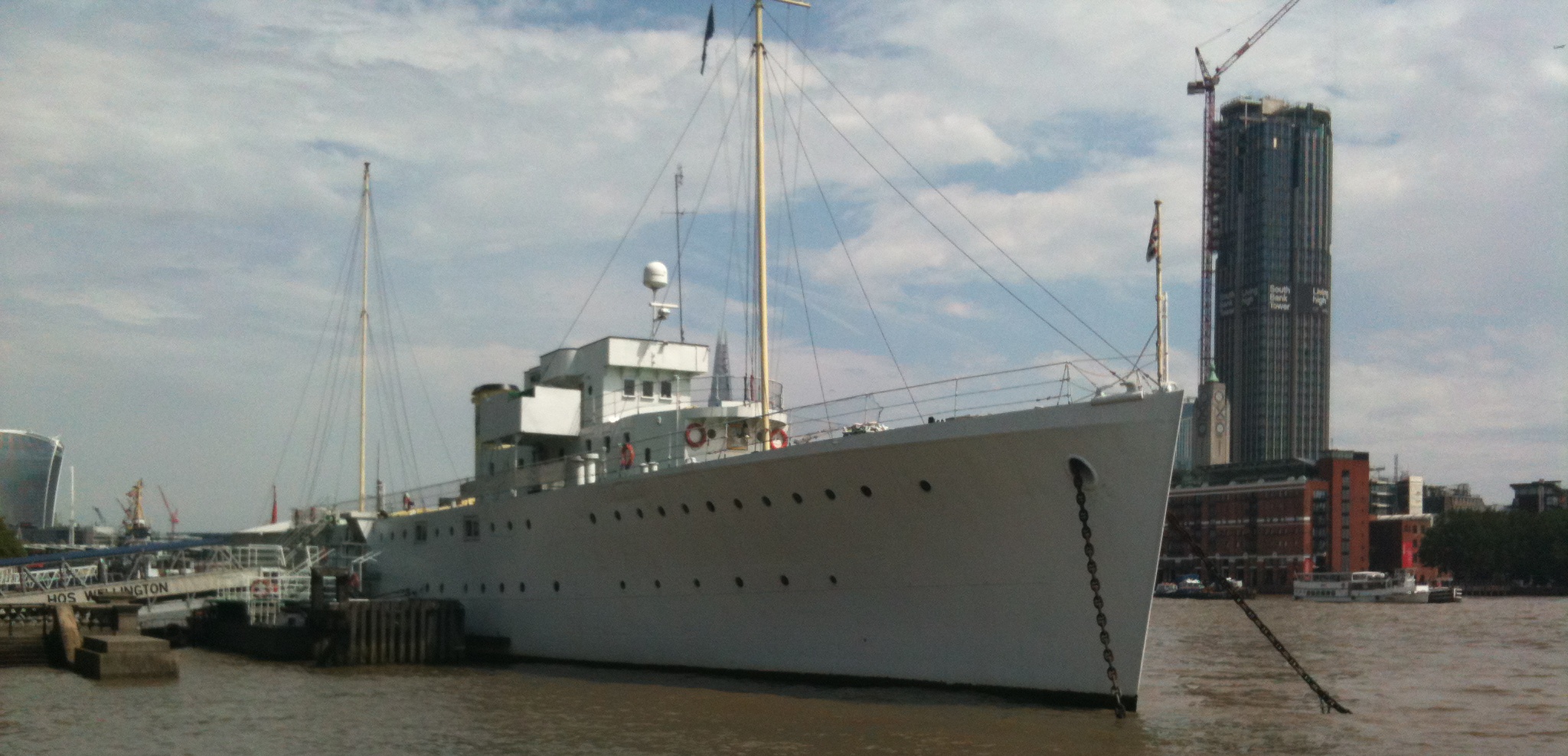
The Garden Bridge Trust has a simple aim – to give Londoners and visitors to London a green space thriving on a bridge crossing the River Thames. To do this, the Trust will need to build supports and other structures into the riverbed, a riverbed that has seen thousands of years of history, and move HQS Wellington, Britain’s last surviving member of the Grimsby Class of sloops which served in World War Two. HQS Wellington is currently moored where the bridge will make landfall on the north side of the river.
In July 2015 Wessex Archaeology’s Coastal & Marine dive team mobilised to support the project. As with any development in England, on land or in the water, the impact of the proposed development on the heritage of the site was carefully considered in the planning stages.
The site where HQS Wellington is moored used to hold a Victorian coffer dam, built c. 1870 some 5 metres from the current embankment wall. The coffer dam held back the water during construction of part of the embankment. Whilst the top of the Victorian dam has long since been removed, the base may still lie in the murky water or muddy bed of the Thames. Our divers were supported by the Port of London Authority dive team, who we have worked with many times ahead of development in the Thames and its estuary, to find out.

As the project continues, Wessex Archaeology will continue to support the development, and the Garden Bridge Trust, in this bold and innovative project to add a touch of greenery to the cityscape of one of England’s oldest and most vibrant cities.